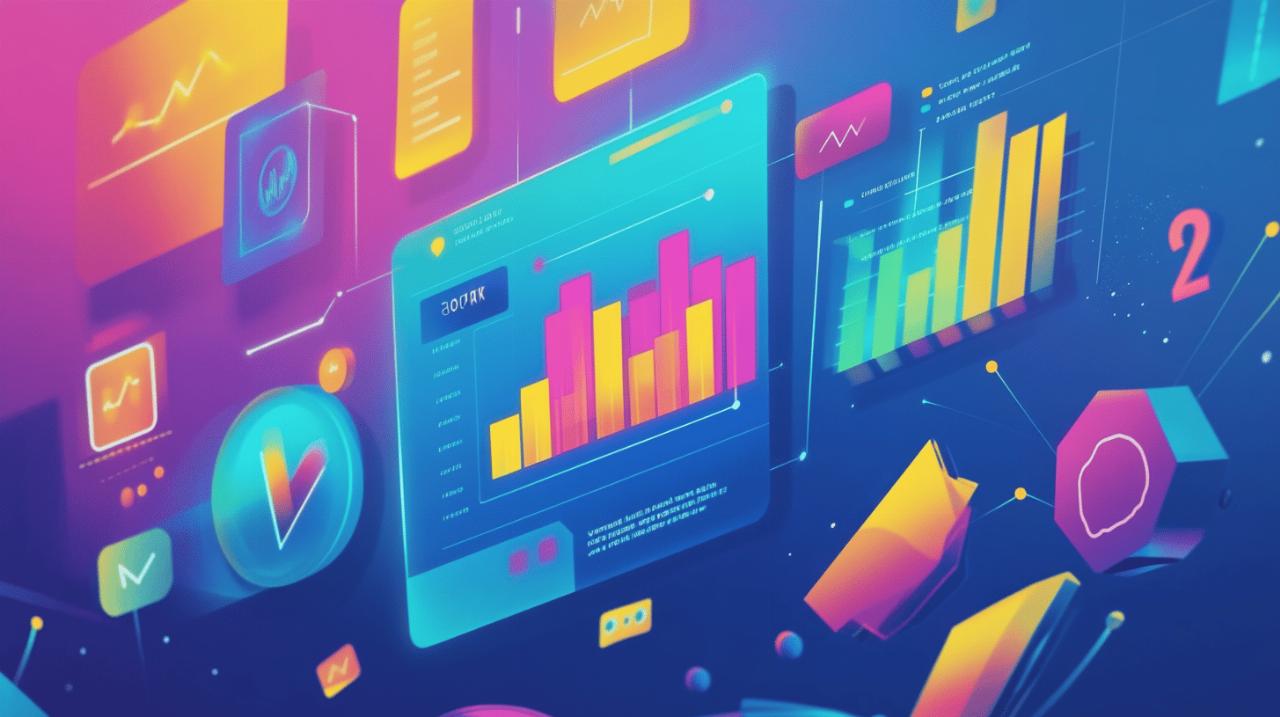In an era where digital noise reaches unprecedented volumes, brands face the relentless challenge of capturing fleeting attention spans. Static imagery increasingly struggles to penetrate the constant stream of information that bombards modern consumers. Within this competitive landscape, animated GIF banners emerge as compelling tools that bridge simplicity with visual dynamism, offering marketers a powerful method to breathe life into their messaging whilst maintaining technical efficiency and cross-platform compatibility.
The Enduring Appeal of Animated GIF Banners in Digital Marketing
The animated GIF banner has demonstrated remarkable staying power in the ever-evolving digital marketing ecosystem. Whilst technologies advance and platforms multiply, the fundamental effectiveness of looping animations continues to deliver measurable results. This enduring appeal stems from the format's unique ability to combine movement with accessibility, creating visual experiences that demand attention without requiring complex video infrastructure or substantial bandwidth commitments.
How Movement Captures Attention in a Crowded Digital Space
Human vision naturally gravitates towards motion, an evolutionary trait that marketing professionals have cleverly harnessed through animated banner ads. When static images dominate a webpage or social feed, even subtle animation creates an immediate focal point that draws the eye effortlessly. Research into visual processing reveals that movement triggers instinctive responses in viewers, making animated GIF banners inherently more noticeable than their stationary counterparts. Brands leveraging this biological reality consistently report enhanced click-through rates, with some campaigns demonstrating improvements exceeding thirty-five percent when transitioning from static to animated formats. This attention-grabbing quality becomes particularly valuable in environments saturated with competing messages, where differentiation represents the critical first step towards meaningful brand engagement and customer conversion.
The psychology behind why gif animations resonate with audiences
Beyond mere visual capture, animated GIF banners tap into deeper psychological mechanisms that foster emotional connection and memory formation. The looping nature of these animations creates a sense of narrative continuity that static images simply cannot achieve, allowing brands to tell micro-stories that unfold across mere seconds yet leave lasting impressions. Colour transitions, timing variations, and purposeful movement work in concert to evoke emotional responses, transforming straightforward promotional content into experiences that resonate on visceral levels. This emotional storytelling capability proves particularly effective when brands seek to humanise their messaging or establish personality traits that distinguish them within crowded markets. The universal visual language of animation transcends demographic barriers, making these formats remarkably accessible whilst maintaining sophisticated communication potential that appeals to diverse audience segments across cultural boundaries.
Strategic advantages: what makes animated gif banners transform brand engagement
The transformative power of animated GIF banners extends well beyond initial attention capture, delivering strategic advantages that fundamentally reshape how audiences interact with brand messaging. These benefits manifest across multiple dimensions of digital marketing, from message comprehension to brand personality development, creating compound effects that amplify campaign effectiveness.
Conveying complex messages through simple, looping animations
One remarkable strength of animated GIF banners lies in their capacity to distill intricate concepts into digestible visual sequences. Where lengthy text explanations might overwhelm or disengage viewers, carefully crafted animations can demonstrate product functionality, highlight service benefits, or clarify value propositions through intuitive visual progression. This simplification proves invaluable for brands operating in technical sectors or offering innovative solutions that require explanation. A financial services provider might use sequential animation to illustrate investment growth over time, whilst a software company could demonstrate interface navigation through smooth transitions that mirror actual user experience. The looping format reinforces these messages through repetition without becoming intrusive, allowing viewers to absorb information at their own pace whilst maintaining engagement. This approach to visual communication significantly reduces cognitive load, making complex information more accessible whilst simultaneously increasing retention rates and comprehension amongst target audiences.
Building brand personality and emotional connection through motion
Animated GIF banners serve as powerful vehicles for expressing brand identity and cultivating emotional bonds with audiences. The movement, timing, and stylistic choices embedded within these animations communicate personality traits that position brands within the minds of consumers. A playful bounce or whimsical transition might convey approachability and creativity, whilst smooth, precise movements suggest professionalism and reliability. These subtle cues accumulate across touchpoints, contributing to cohesive brand perceptions that drive preference and loyalty. Motion graphics allow brands to inject humour, warmth, or excitement into their digital presence, creating memorable interactions that transcend transactional relationships. When viewers encounter animations that align with their values or aspirations, emotional connections form naturally, fostering the type of engagement that translates into sustained customer relationships. This dimension of brand storytelling proves particularly effective in social media marketing contexts, where shareability depends heavily on content that resonates emotionally and reflects positively on those who distribute it within their networks.
Best practices for creating high-impact animated gif banners
 Maximising the potential of animated GIF banners requires careful attention to both creative execution and technical optimisation. Success in this medium depends upon balancing visual appeal with performance considerations, ensuring that animations enhance rather than hinder user experience across diverse digital environments.
Maximising the potential of animated GIF banners requires careful attention to both creative execution and technical optimisation. Success in this medium depends upon balancing visual appeal with performance considerations, ensuring that animations enhance rather than hinder user experience across diverse digital environments.
Balancing Visual Appeal with Technical Optimisation for Performance
Creating effective animated GIF banners demands meticulous attention to file size management without compromising visual quality. Bloated files introduce loading delays that frustrate users and undermine campaign effectiveness, particularly in mobile contexts where connection speeds vary considerably. Marketers must therefore employ compression techniques that maintain animation smoothness whilst keeping file sizes well below platform-specific thresholds. Limiting colour palettes, reducing frame counts where possible, and optimising frame delays all contribute to leaner files that perform reliably across networks. The visual design itself should embrace simplicity, focusing animation efforts on elements that directly support the core message rather than gratuitous movement that distracts or confuses. Clear typography paired with strategic colour choices ensures readability despite motion, whilst purposeful animation directs attention towards calls to action at precisely the right moments. This disciplined approach to design creates banners that load swiftly, communicate effectively, and guide viewers towards desired actions without overwhelming or alienating them through excessive visual complexity.
Designing for Multiple Platforms and Devices Without Compromising Quality
The fragmented nature of today's digital landscape requires animated GIF banners that adapt gracefully across platforms, devices, and viewing contexts. What appears crisp and engaging on a desktop monitor might become illegible or jarring on a smartphone screen, necessitating responsive design thinking from the earliest creative stages. Successful campaigns often involve creating multiple variations optimised for specific placements, adjusting dimensions, animation speeds, and even messaging hierarchies to suit different environments. Social media platforms impose distinct technical specifications and viewing behaviours that demand tailored approaches, whilst display advertising networks maintain their own requirements regarding file formats and performance standards. Maintaining brand consistency across these variations presents an additional challenge, requiring careful management of visual elements and messaging frameworks that remain recognisable despite platform-specific adaptations. Testing animations across browsers, devices, and connection speeds before deployment identifies potential issues that might otherwise compromise campaign performance, ensuring that technical execution matches creative ambition regardless of how or where audiences encounter the content.
Measuring success: how animated gif banners drive tangible results
The ultimate validation of any marketing investment lies in measurable outcomes that demonstrate return and inform future strategy. Animated GIF banners offer numerous opportunities for performance tracking, providing insights that extend beyond vanity metrics to reveal genuine impact on business objectives.
Key metrics that demonstrate enhanced engagement and conversion rates
Tracking the effectiveness of animated GIF banners requires monitoring specific metrics that illuminate both immediate engagement and downstream conversion behaviour. Click-through rates provide immediate feedback on whether animations successfully capture attention and motivate action, with typical display advertising benchmarks hovering around one-tenth of one percent, though well-executed animated campaigns frequently exceed this considerably. Conversion rates reveal whether the traffic generated through these banners comprises genuinely interested prospects who complete desired actions, whether purchasing products, subscribing to services, or engaging with content. Advanced tracking implementations can attribute specific conversions to individual banner variations, enabling sophisticated analysis of which creative approaches deliver optimal results. Engagement duration metrics offer additional insights, indicating whether animations hold attention sufficiently to communicate complete messages before viewers navigate away. A/B testing methodologies prove particularly valuable in this context, allowing marketers to isolate the impact of specific animation choices by comparing performance against control variants or alternative approaches, thereby building empirical understanding of what resonates most effectively with target audiences.
Real-world case studies showcasing transformative brand engagement
Practical applications of animated GIF banners across industries provide compelling evidence of their transformative potential. An e-commerce retailer implementing animated product demonstrations within their banner campaigns documented engagement increases approaching fifty percent compared to previous static approaches, with corresponding uplift in conversion rates that significantly improved campaign profitability. A streaming entertainment service deployed GIF banners featuring brief clips from popular programming, resulting in substantially higher subscription initiations amongst viewers who encountered the animated content versus those exposed to static promotional imagery. These successes stem from strategic alignment between animation choices and audience preferences, with movement serving specific communication purposes rather than existing merely for aesthetic appeal. Food delivery platforms have found particular success with animations depicting steaming meals being prepared or delivered, tapping into visceral responses that drive immediate action amongst hungry viewers. Fashion retailers showcase outfit variations through subtle frame transitions that demonstrate product versatility without requiring video infrastructure. Across these diverse applications, the common thread involves thoughtful integration of animation into broader marketing strategies, where movement serves specific objectives within carefully constructed customer journeys that guide audiences from initial awareness through to committed engagement and conversion.





